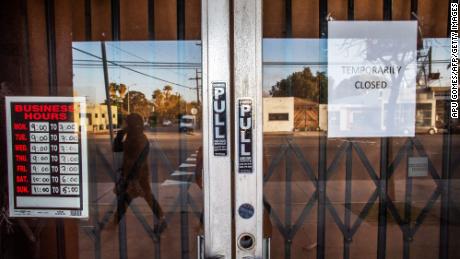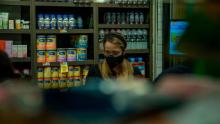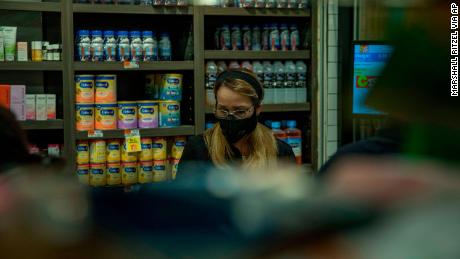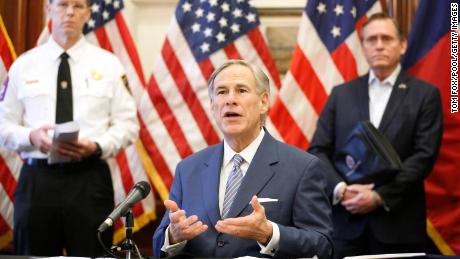While some officials talk about reopening the country, there is still so much that needs to be done
As officials discuss the merits of reopening the country, experts say it’s important they manage the expectations of the public, clearly communicate the risks and be wary of giving people a false sense of security.
“I think it runs the risk of being premature and giving people false hope that we can quickly change into the next phases,” Dr. Lucy Wilson, an infectious disease physician and professor of emergency health services at the University of Maryland, Baltimore County, said of discussions to reopen.
“But I also think it’s necessary to include the public,” she added, “because we’re asking so much of them at this time.”
The risks need to be communicated …
Talking about reopening could lead the public to believe the country can quickly and easily return to normal, when in reality, many officials have warned a return to normal will take place gradually.
“Public discussions have the potential to raise the public’s expectations of reopening and create a false sense of security that the disease is controlled in the United States,” Wilson said.
Wilson told CNN it’s natural for people to anticipate a relaxing of restrictions as we see the positive impacts of social distancing.
“However, Americans must be made aware of the likelihood the country will have a resurgence in heightened levels of disease activity and death and this will necessitate returning to earlier stages of strict social distancing.”
“Managing these expectations is crucial for prevention of future Covid-19 surges,” she said.
“We all need to understand this will be a gradual process,” Montana Gov. Steve Bullock told residents of his state this week. “Because once we begin to reopen, we want to be able to stay open.”
Wilson warned that the country should expect to see more infections and more deaths. “And no matter what we do we are going to have additional cases, and we probably will have additional waves of infection that are significant enough that we need to retrace our steps and revert to earlier phases of our control plan.”
Many US governors have been clear that the path toward reopening their states involves effective infrastructure for testing, tracking and treating the coronavirus.
… but discussions can provide hope
Stephen Wu, a professor of economics at Hamilton College, said he doesn’t see much danger in talking about reopening at this stage, though he believes it best to “err on the side of caution and not rush to open things up.”
But early discussions of reopening the country could have some benefits, like giving people some hope at a dark time.
“While some may feel it is premature to talk about reopening the economy,” Wu said, “there are also plenty of people who are looking for some light at the end of the tunnel, particularly people who are furloughed, unemployed or seeing their small businesses suffer from the shutdown.”
“Having some preliminary discussions about ways to cautiously and gradually allow businesses to open may provide people with a sense of hope,” Wu said. “There really is a tricky balance in providing some optimism to the public, while not wanting to lull people into a sense of false security.”
But there could be some positive economic impacts to discussing the reopening, Wu said, as opposed to letting people think we’ll be stuck in our homes indefinitely.
A bit of “cautious optimism” could help consumer confidence. People may make or begin planning purchases they wouldn’t make otherwise, Wu said. It could also potentially help markets, he said.
“I think that’s why having some talk of it — no promises — but I think that could be helpful for the economy in the sense that there’s some optimism about the future.”
It’s also good for the public to hear from officials that they’re planning for a return to normal, Wilson said.
“We have asked the public to engage in a way that often they haven’t been able to engage in public policy or interventions like this,” she said. “They’re part of the process.”
By publicly discussing plans and keeping the public engaged, officials indicate they’re aware of the sacrifices people have made, she said, and are working to come up with a plan.
“I think that’s a positive,” she said.
It will take ‘tremendous effort’
In some cases, officials have taken steps in that direction.
But opening up will be gradual — officials have spoken about opening up in phases, and some states or regions may be ready before others.
“This is not a light switch that we can just flick on and everything goes back to normal,” New York Gov. Andrew Cuomo said earlier this week, adding, “we have to come up with a smart, consistent strategy to restart the systems we shut down and get people back to work.”
People need to understand the steps to reopening and be told about the “the tremendous effort ” it will take to get there, she said.
“I think there needs to be very clear communication with these discussions that these are explorations of reopening,” Wilson said. Before we can reopen, “certain measures” have to be in place.
![]()








